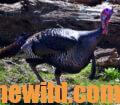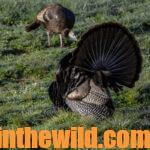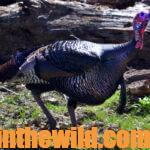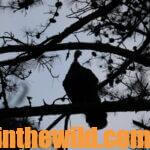Editor’s Note: Hunters who consistently bag turkeys each season and have the greatest chances of success spend more time scouting and studying the birds than they do hunting them. You can take non-gobbling turkeys
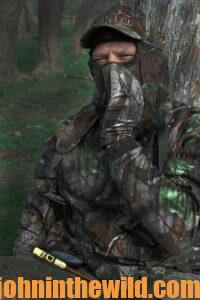 On the day a friend and I had planned to hunt turkeys, the sun refused to come out for fear of being struck by lightning as the heavens dumped rain all around. The tin roof of the hunting club sang the song of dancing raindrops as thunder woke us from a deep sleep. “Those turkeys aren’t going to gobble this morning,” I told Don Taylor, a turkey-hunting buddy of mine. “Maybe not, but for sure we won’t bag one lying in bed,” Taylor observed. “If we don’t go, we can’t hunt. Even with the bad weather we may luck into a turkey.”
On the day a friend and I had planned to hunt turkeys, the sun refused to come out for fear of being struck by lightning as the heavens dumped rain all around. The tin roof of the hunting club sang the song of dancing raindrops as thunder woke us from a deep sleep. “Those turkeys aren’t going to gobble this morning,” I told Don Taylor, a turkey-hunting buddy of mine. “Maybe not, but for sure we won’t bag one lying in bed,” Taylor observed. “If we don’t go, we can’t hunt. Even with the bad weather we may luck into a turkey.”
Pride kept me from rolling back over in the bed and pulling the covers over my head. If Taylor was planning to hunt in the rain, I wasn’t going to wimp-out and stay in bed. Taylor was confident in our ability to call a turkey up – even on a bad, rainy day – because he’d been scouting the area we were to hunt for two weeks and seemed to know most of the gobblers by their first names.
 Spring turkey hunting can be risky if the hunter depends solely on the tom to gobble to locate the bird. A hunter who learns a turkey’s haunts and habits doesn’t have to rely on a tom to vocalize to pinpoint the bird’s location. Don Taylor is such an outdoorsman.
Spring turkey hunting can be risky if the hunter depends solely on the tom to gobble to locate the bird. A hunter who learns a turkey’s haunts and habits doesn’t have to rely on a tom to vocalize to pinpoint the bird’s location. Don Taylor is such an outdoorsman.
In the pouring rain, we took a stand on the edge of a power line right-of-way. Since the rain was falling so hard, we had pulled the truck to within 100 yards. Sitting next to a large oak tree, Taylor began to call loudly above the report of the thunder and the pounding of the water. “I’ve been watching a longbeard come into the field right below where we are,” Taylor mentioned. “If he can hear me calling, maybe we can get him to come up here to give us a shot.”
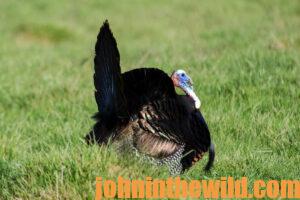 As the rain fell, I was thinking that this was the most-ridiculous turkey hunt I’d been on because no one in his right mind would hunt turkeys in a driving rain – even if this was the opening morning of turkey season. But after 45 minutes of our calling, a drenched gobbler appeared in the field below us. He slowly began to slog to us. Although the tom never gobbled or in any way indicated that he’d heard Taylor’s calling, he came as straight to us as if we were reeling him in on a string.
As the rain fell, I was thinking that this was the most-ridiculous turkey hunt I’d been on because no one in his right mind would hunt turkeys in a driving rain – even if this was the opening morning of turkey season. But after 45 minutes of our calling, a drenched gobbler appeared in the field below us. He slowly began to slog to us. Although the tom never gobbled or in any way indicated that he’d heard Taylor’s calling, he came as straight to us as if we were reeling him in on a string.
When the bird was 60-yards away, I looked toward the truck and spotted a white light blinking. As a nearby tree limb move back and forth in the wind, it passed in front of the truck’s mirror and made the reflected light appear to blink. After the tom had taken about 20-more steps, he too saw the reflection. Instead of coming up on the hill where we were, he turned to walk around the side of the hill. As soon as the gobbler was out of sight, we ran to the top of the hill to a position we thought was about 100 yards in front of the turkey. This time we called for about an hour but never heard a turkey sound. However, when we got up to leave, we flushed the gobbler that was no more than 30 yards behind us. Even though the gobbler hadn’t talked, we surely would have heard him walking had it not been for the pouring rain.
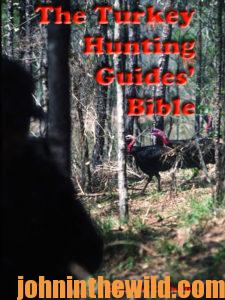 To learn more about hunting turkeys successfully, visit John E. Phillips’ Amazon book page at https://www.amazon.com/John-E.-Phillips/e/B001HP7K6O. For even more information from many of the top turkey hunters, callers and guides, go to the book, “Turkey Hunting Guides’ Bible,” at https://www.amazon.com/gp/product/B01ITWYY2K/ref=dbs_a_def_rwt_hsch_vapi_taft_p5_i10
To learn more about hunting turkeys successfully, visit John E. Phillips’ Amazon book page at https://www.amazon.com/John-E.-Phillips/e/B001HP7K6O. For even more information from many of the top turkey hunters, callers and guides, go to the book, “Turkey Hunting Guides’ Bible,” at https://www.amazon.com/gp/product/B01ITWYY2K/ref=dbs_a_def_rwt_hsch_vapi_taft_p5_i10
and available in Kindle, print and Audible. You may have to copy and paste this link into your browser. (When you click on the book, notice on the left where Amazon says you can read and hear 10% of the book for free). On the right side of the page and below the offer for a free Audible trial, you can click on Buy the Audible book.
Tomorrow: Take Rainy Weather Turkeys by Studying Them

